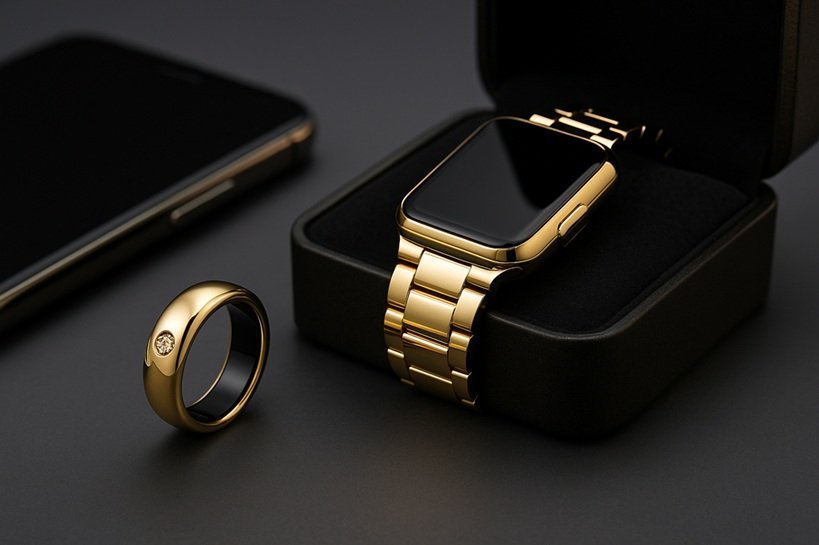Jewelry design has always been a delicate balance of artistry, craftsmanship, and emotion. But in recent years, a powerful new force has entered the atelier: technology. From AI-driven design to 3D printing and blockchain authentication, tech is revolutionizing how bespoke pieces are imagined, produced, and delivered. In the realm of custom jewelry manufacturing, this fusion of tradition and innovation is not only enhancing creative possibilities but also redefining how customers interact with the design process itself.
From Pencil Sketch to Digital Precision
For centuries, jewelry designs began as pencil sketches on vellum—beautiful in their own right but limited in precision. Today, those sketches have been replaced or enhanced by CAD (Computer-Aided Design) software, which allows jewelers to create detailed, three-dimensional renderings of a piece before a single gram of gold is cast.
This digital precision has transformed the collaboration between jeweler and client. Customers can see every angle of their future piece, zoom in on intricate details, and request adjustments instantly. No longer bound by static drawings, they can virtually “try on” designs and visualize how a ring might look with a different cut of diamond or a subtle twist in the band.
3D Printing: Prototyping in Hours, Not Weeks
One of the most exciting advancements in custom jewelry is 3D printing. Before, producing a prototype could take weeks of labor-intensive work, often involving hand-carving wax molds. Now, high-resolution 3D printers can produce an exact replica of a design in a matter of hours.
This rapid prototyping benefits both designers and customers. Jewelers can refine the fit and comfort of a piece before final production, while clients gain the confidence of handling a tangible preview of their design. It’s a level of interactivity and assurance that was unimaginable just a decade ago.
AI-Powered Creativity
Artificial intelligence is stepping in as a creative partner, analyzing trends, predicting design preferences, and even suggesting gemstone combinations that align with a client’s style profile. AI tools can learn from a jeweler’s past work or a customer’s Pinterest board, offering inspiration that’s tailored and relevant.
This doesn’t replace the artistry of the jeweler—instead, it expands it. Designers can use AI-generated concepts as starting points, refining them with their own expertise and the client’s input to produce pieces that are both contemporary and deeply personal.
Blockchain and the Age of Transparency
In a world where consumers are increasingly conscious about sourcing and ethics, blockchain technology is bringing unprecedented transparency to custom jewelry. By recording each stage of a gemstone’s journey—from mine to cutting workshop to jeweler’s bench—blockchain ensures traceability and authenticity.
For clients, this means the ability to verify that their stones are ethically sourced and conflict-free. For jewelers, it’s a chance to build trust and demonstrate integrity, two qualities that are just as valuable as gold in today’s luxury market.
Virtual Reality and Immersive Experiences
Imagine putting on a VR headset and stepping into a virtual showroom where you can “try on” jewelry, change gemstones, and view designs under different lighting conditions. This is no longer science fiction—it’s the next frontier in customer engagement.
Virtual reality experiences allow clients to interact with designs in a way that goes far beyond static images. For jewelers, it’s an opportunity to offer immersive consultations that feel personal, even if the customer is halfway around the world.
Sustainability Through Technology
Tech innovation is also playing a critical role in making custom jewelry more sustainable. CAD modeling minimizes material waste, 3D printing reduces the need for multiple molds, and blockchain supports ethical sourcing. Combined with lab-grown gemstones and recycled precious metals, these advancements allow jewelers to align creativity with environmental responsibility.
This eco-conscious approach resonates strongly with today’s buyers, who want their luxury purchases to reflect their values. By integrating technology into the process, jewelers can deliver both beauty and a clear conscience.
The Human Touch Remains Irreplaceable
Despite all the technological advancements, one element of custom jewelry creation remains unchanged: the human touch. Setting a stone, hand-polishing a surface, and perfecting the final finish are skills honed over years of practice and cannot be replicated by machines.
Technology enhances and accelerates the creative process, but it’s the jeweler’s craftsmanship that breathes life into a design. The magic happens in the seamless integration of human artistry with the precision and possibilities offered by innovation.
Crafting the Future of Jewelry
Technology is not replacing tradition—it’s redefining it. In custom jewelry manufacturing, the tools of the trade have expanded to include AI algorithms, 3D printers, and blockchain ledgers alongside workbenches and polishing wheels. The result is a new era where creativity knows no bounds, customers are more engaged than ever, and each piece is as unique as the person who wears it.
The innovation spark has ignited a transformation that will shape the jewelry industry for decades to come. And for those who embrace it, the future is not just bright—it’s brilliantly, unmistakably personal.



